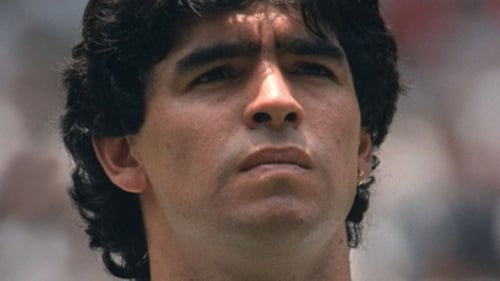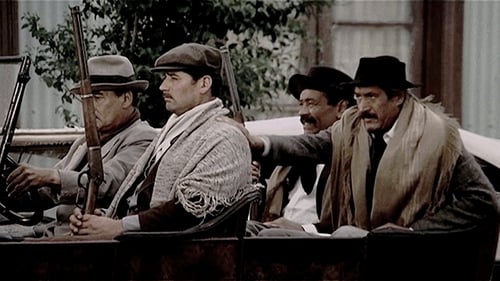Osvaldo Bayer
Рождение : 1927-05-18, Santa Fe, Argentina
Смерть : 2018-12-24

Documentary that tells the life, death and desecration of the mortal remains of three great chiefs of the pampas and Patagonia: Mariano Rosas, Cipriano Catriel and Juan Calfucurá, who after the bloody Desert Campaign, were desecrated in the name of science (whose skulls ended up swelling the collections of Argentine anthropological museums) and a fourth lonko or cacique, the irreducible Vicente Pincén, who once stopped by Colonel Villegas, could only be captured on four famous photographic plates.

Documentary film about the "zanja de Alsina", a long trench dug in the Argentinian Pampa in 1876 as way to separate the "civilized" from the "barbarians" during the massacre of indigenous peoples known as "campaña del desierto".

The natural sciences museum of La Plata, Argentina, had indigenous people held captive as study objects in the past, and their skeletons were on exhibit for many decades. The story of Krygi, served as a trigger to look back at the ideologies that defined us as individuals and as a people.

himself
The story of the mythical anarchist begins to weave on May 1, 1909, when the police repress a massive anarchist march in Buenos Aires, leaving dead and wounded. A few months later, the carriage of Ramón Falcón, the police chief who commanded the repression, explodes and flies through the air. For the attack, a young Ukrainian is arrested: Simón Radowitzky.

Writer
The story of the mythical anarchist begins to weave on May 1, 1909, when the police repress a massive anarchist march in Buenos Aires, leaving dead and wounded. A few months later, the carriage of Ramón Falcón, the police chief who commanded the repression, explodes and flies through the air. For the attack, a young Ukrainian is arrested: Simón Radowitzky.

This documentary exposes the untold story about the killing of native Southamerican people in Argentina in the late XIX century, with the aim of taking their lands for economical and political purposes.

Self
Buenos Aires at the end of the millennium a young filmmaker hopeless about their future decides to film his last act.

Himself
A fragmented biography, inconclusive, partial, of the brilliant Argentinian writer Jorge Luis Borges, based on different testimonies: his links with Leonor de Acedevo —his mother— and María Kodama —his second wife—; his vast culture and devout dedication to literature, his and that of others; his country: the politicians and the disloyal military. Borges gradually builds his own impersonation of Borges.

Writer
A history of Argentine football, from its origins in the nineteenth century to the victory of the Argentine national team in the 1986 World Cup. The film uses valuable archival footage.

Writer
Since childhood, Raquel and Maria have been close friends. Now all grown-up, Raquel has fulfilled her dream of becoming an actress, while Maria has married a handyman, given birth to three children and runs the family household. In the wake of the Argentine military coup of 1976, Maria's oldest son Carlos is abducted. Desperate, Maria turns to her prominent friend for help. Yet the more Raquel gets involved in the search for Carlos, the more she becomes herself a target of the junta. Finally, she flees from Argentina to Berlin. Meanwhile Maria joins a group of women who investigate the fate of their disappeared relatives. In 1983, after the fall of the dictatorship, the two friends meet again.

Writer
Documentary about the detention-dissapearance of Juan Marcos Herman in the city of Bariloche during the Dirty War in Argentina

Documentary on State terrorism during the last military dictatorship in Argentina, made in its aftermath. Invited by the Goethe-Institut to hold a workshop with young film students, Schroeter contrasts the official statements of the regime with the testimony of victims, dissidents and relatives of the disappeared. And trust that their faces and words will resonate much more than a mere representation of violence.

Writer
Five Argentinian women, with missing relatives from the military dictatorship that ruled the country, explain their emotions and feelings about all that happened.

Himself
The days between the end of the military dictatorship and the beginning of the constitutional period from 1983: political debates in the streets and the meetings of the Mothers of Plaza de Mayo, who were waiting for the role that each political party would play to claim for the disappeared. Osvaldo Bayer in first person.

Screenplay
В 1920 рабочие Юга Аргентины, организованные в анархистские и социалистические сообщества, начали забастовку, требуя улучшения условий их труда. При посредничестве представителя президента Аргентины удалось добиться заключения трудового соглашения между хозяевами и рабочими профсоюзами, и забастовка была прекращена. Но хозяева отказались выполнять соглашение. И тогда снова началась забастовка, быстро ставшая всеобщей. Правительство ответило на забастовку жесточайшими репрессиями. Были расстреляны сотни рабочих.

Book
В 1920 рабочие Юга Аргентины, организованные в анархистские и социалистические сообщества, начали забастовку, требуя улучшения условий их труда. При посредничестве представителя президента Аргентины удалось добиться заключения трудового соглашения между хозяевами и рабочими профсоюзами, и забастовка была прекращена. Но хозяева отказались выполнять соглашение. И тогда снова началась забастовка, быстро ставшая всеобщей. Правительство ответило на забастовку жесточайшими репрессиями. Были расстреляны сотни рабочих.















